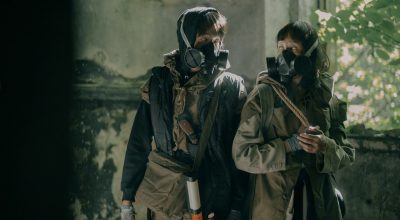Your vehicle is your home away from home when out on the road. It provides shelter from the elements and acts a place to rest. Some of you might even live in one if you frequently travel from state to state. When you are inside your vehicle, you are in your domain, your world, your safe space.
Because you are going to spend a lot of time near it, you should store your larger EDC gear on your vehicle. Items that might not fit inside your EDC jacket or is too heavy to carry on your EDC waist bag.
In this article, we are going to talk about what to bring and store in your vehicle, be it your car or your truck, so that you’re always prepared.
Analyzing your Vehicle EDC Needs
Before answering the question of what to bring as an EDC gear on your vehicle, you have to know what are your daily needs and what kinds of situation you’ll likely face. You also need to identify what your car needs and it’s common problems so that you can prepare effectively.
Most new vehicles come with a jack and and an emergency spare tire so that you can safely get to the nearest mechanic. This covers your needs when out in the city, but what if you’re going to the wilderness? You might want to bring more spare tires so that when two breaks, you won’t be out of luck.
Another basic vehicle EDC item is a road flare or reflectors to put out while you change that tire. Whether in the daylight or dark, it is advisable to use reflectors or flares so that other people can see you clearly. In dry areas especially during fall, reflectors are a safer choice due to fire hazard from the dry leaves.
In your regular daily commute, you can generally anticipate how much fuel you need in the tank to make the trip. But what about an unexpected emergency like an accident or road work that requires you to make a detour? You should always have extra fuel in the tank than you need, just in case.
This is also why having extra fuel is very important if you’re travelling in remote places, you never know when you’ll find the next gas pump. If you are taking a long trip into unknown territory it isn’t a bad idea to carry a 5 gallon can of fuel for just in case.
When you are venturing into the wilderness in a vehicle, you absolutely want to take extra fuel with you. Whether that vehicle is a truck or an ATV, strap a can of fuel on it somewhere. You should bring enough fuel to get you there and back home with plenty to spare.
When travelling in remote territories, it’s also important to bring critical fluids for your vehicle such as radiator liquid and some oil. These can save you and your car when it invariably leaks in the middle of nowhere.
Bringing spare parts is also important if you know your car is prone to breaking down. However, consult with a mechanic first to see which parts are readily available along your route. Stock up on the rare ones first that you won’t find at a local mechanic!
All in all, a proper analysis of what you need and what situations you’ll likely come across is very important. It helps tremendously in deciding what gear to bring and store in your vehicle.
Everyday Carry Gear for Your Vehicle
Everyday carry (EDC) supplies to keep in your vehicle will vary depending on the time of year and your location. They should be changed according to the season and where you are currently travelling to.
After all, if you’re in the desert, your needs are probably different compared to your friend living in the mountains. Of course some areas have both deserts and mountains in them, so you just need to plan ahead.
The most important thing after analyzing what you need and what you’ll face is to create a list of items that might be helpful. This will be your everyday carry items to store on your vehicle, be it a car or a truck. Usually, you’d want to categorize it into several parts such as
- Food and Water
- Vehicle related supply
- Utility Tools
- Clothing and Apparel
- Defense
- Communication and Signage
Not all of them has to be stored inside your car’s trunk. Smaller and more important items can be stored inside an emergency bug out bag (BOB). This can be very helpful if for whatever reason you have to quickly ditch the vehicle and continue on foot.
Food and Water

Keeping adequate amounts of food and drinking water in your vehicle is very important. You never know when you’ll get stranded, so it’s best to be prepared.
Humans need a lot of water and some food to survive. Without it, our body will cease to function and we will become lethargic and weak. Because of that food and water is an important part of vehicle EDC gear for surviving critical situations.
For water needs, keep several bottles of drinking water in your vehicle at all times. If you’re more of an eco friendly person, substitute that with a couple of filled tumblers. However, keep in mind that you’d have to change the water in the tumbler every couple of days.
Bringing enough water is very important to prevent yourself from getting dehydrated. If you’re travelling to tropical areas or areas where it’s hot, remember to bring more water because you will sweat more. If you’re travelling to colder areas, water is still important but you can carry less of it.
You should also keep a couple gallons of water and a jug of antifreeze in case your vehicle overheats. This could be the deciding factor between being stranded in the middle of nowhere or making it to the nearest mechanic.
For food, it’s better to stock up on some non-perishable snacks such as protein bars or crackers. They’re compact, full of protein, and will help keep your tummy full far away from civilization.
If you want more luxurious food and have extra budget, you can always bring some military ration and some form of heating to cook them. These are called MRE’s or Meal Ready to Eat, you just need to heat them up to enjoy a warm hearty meal.
Make sure to have enough food and water to cover the entire distance of your journey, or at least the distance to the closest city/village. You never want to be stranded in the middle of nowhere without anything to eat or drink for a few days until Search and Rescue finds you.
Clothing and Apparel
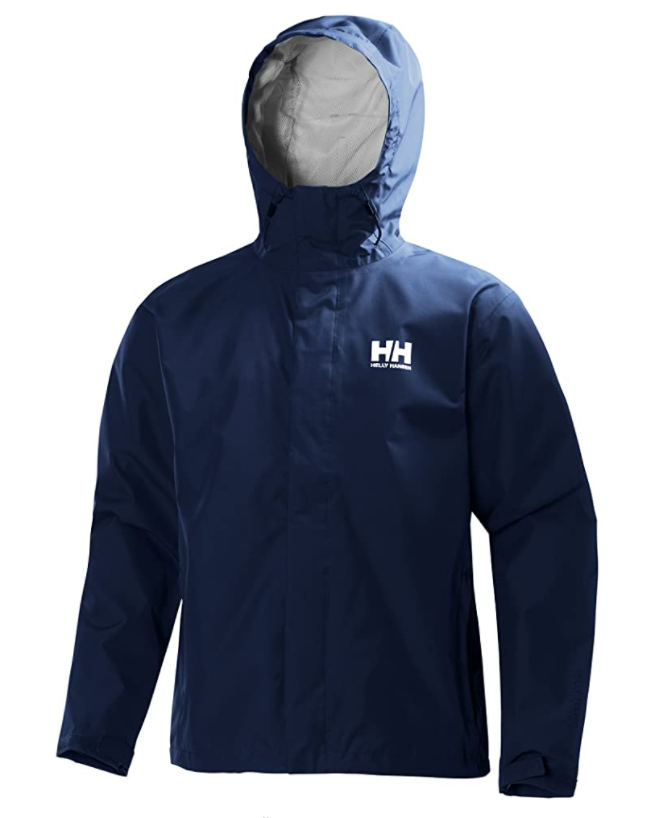
Always bring extra clothes and other apparel inside your daily use vehicle, they are an integral part of vehicle EDC. You never know when you might need to change clothes or layer on a raincoat to brave through a thunderstorm.
Clothes are important because you never know when you need a spare one. Be it because your shirt ripped at the seams, got wet due to sudden rain, or burned in a freak fire, you always need to prepare for the unexpected. Bring at least 2 pairs of extra clothing in your vehicle’s trunk.
If you’re travelling to areas where it’s cold or even freezing, consider bringing cold weather clothing and a fleece liner to keep you comfortable during the trip. If you don’t have one, you can browse all kinds of cold weather clothing at Amazon or other e-commerce stores.
We’ve talked about EDC Jackets before, these are outwear you can (and should) wear everyday and store on your vehicle. Bringing the right jacket can help protect you during critical situations such as a rainstorm, a cold wave, or just simply wading through a light drizzle.
If you conceal carry a firearm, then consider concealed carry jackets instead. They have designated pockets that you can use to store your gun safely compared to regular EDC jackets.
Don’t forget to bring blankets for added warmth during your trip. You never know when you might need to sleep inside your car. During emergency situations, you might even have to ditch your car and sleep outside, exposed to the elements. Bringing a regular blanket or some high-tech emergency Mylar blankets can save your life during these situations.
A good glove is also good utility item to have inside your car’s storage. It can keep your hands warm and even protect it from friction when doing demanding physical activities, such as removing logs that are blocking the road. When travelling in the back countries, it’s very important to be prepared for all kinds of situations.
Utility Tools
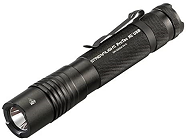
Utility tools cover a wide range of gear that does just that, provide utility that enables you to react to and contain almost any situation. It’s important to have multiple utility items and tools inside your vehicle at all times. Because of that, utility tools are considered a must carry for vehicle EDC.
Flashlight’s are one of the most important utility item. It brings so much utility to just about any situation by providing light and extra illumination.
Just about any flashlight can work as a utility item, but the best should be compact, bright, and rugged. We’ve covered the best tactical flashlights for home defense a while ago. While designed for home defense, these can also be used as a utility tool in your vehicle.
Having a fire extinguisher is also very handy inside your vehicle. You never know when you’ll pull up on an auto accident and need to save someone. Heck, you never know when your car might burn up and you need to put out the fire real quick.
First aid kits also belong in this category, you never know when you might get injured so you better be prepared. If you can’t create your own kit, just buy the many pre-packaged kits available at Amazon or your local store. You might also need to get some cold packs for pain relief, swelling reduction, and to treat bruises.
Hand warmers are very important if you’re travelling to cold areas. They can keep your hands and pockets warm for hours on end.
There are two types of hand warmer, chemical ones that create heat out of chemical reaction and regular ones where it burns fuel to create heat. Personally, I prefer to use chemical hand warmers such as these because they’re easier to use and then dispose of.
To prepare for an accident, you should bring a glass breaker and seatbelt cutter so that you can quickly exit your vehicle. If you’re vehicle is on fire, you only have several minutes before you burn alive due to the heat or the gas tank explodes, killing you and people around you.
Glass breaker is basically a sharp object that you push against your window to shatter it. Some have a spring to quickly shatter the glass while some are shaped like a hammer. These should be placed in a highly accessible location such as your jacket or on your necklace. Some people prefer to place their glass breaker on their keychain for increased accessibility.
Seatbelt cutter is basically a tool that’s used to cut your seatbelt so you can get free from your seat. This is very important if for some reason your seatbelt becomes stuck after an accident. Same as a glass breaker, place these in highly accessible locations so that you can react quickly when shit hits the fan.
Defense
Laws regarding defensive weapons vary wildly between countries and even states. In some areas, it’s perfectly legal to carry a .45 holstered on your tactical belt. While in some, just owning them can get you in trouble with local authorities and lawmakers.
In case you live in an area where it’s legal to carry firearms, do keep a rifle or shotgun in the trunk. Don’t forget to stock up on some ammo. This is handy to have when a disaster strikes and you’re not home to access your fully stocked gun safe.
Here’s a good example of an overhead gun rack that you can use on your vehicle
You can make a bracket mount on the underside of the trunk lid and mount your drag bag there. This keeps it together with your spare magazines and out of the way of other items and ensures it doesn’t become damaged being jostled around in the trunk.
If you prefer to buy ready made sets instead of making your own, there are a lot of them over at amazon or your local gun store.
A good quality knife is also an important utility and defensive item in your vehicle. These can do a lot of things and will help you in most situations. A knife can be used as a makeshift seatbelt cutter, a self defense weapon, or as a bush crafting tool.
Knives should be placed in a highly accessible place that’s also safe. That means, it won’t injure you if there is an accident. Usually, people place knives in their bug out bag or in the center console of their car. There, the knife is sufficiently isolated so it won’t fly during accidents but is still easy to reach.
For me personally, if you can’t bring a gun, make sure to bring a knife as your vehicle’s EDC gear. Besides defensive purposes, they also serve as multifunctional utility tools.
Communication and Signage
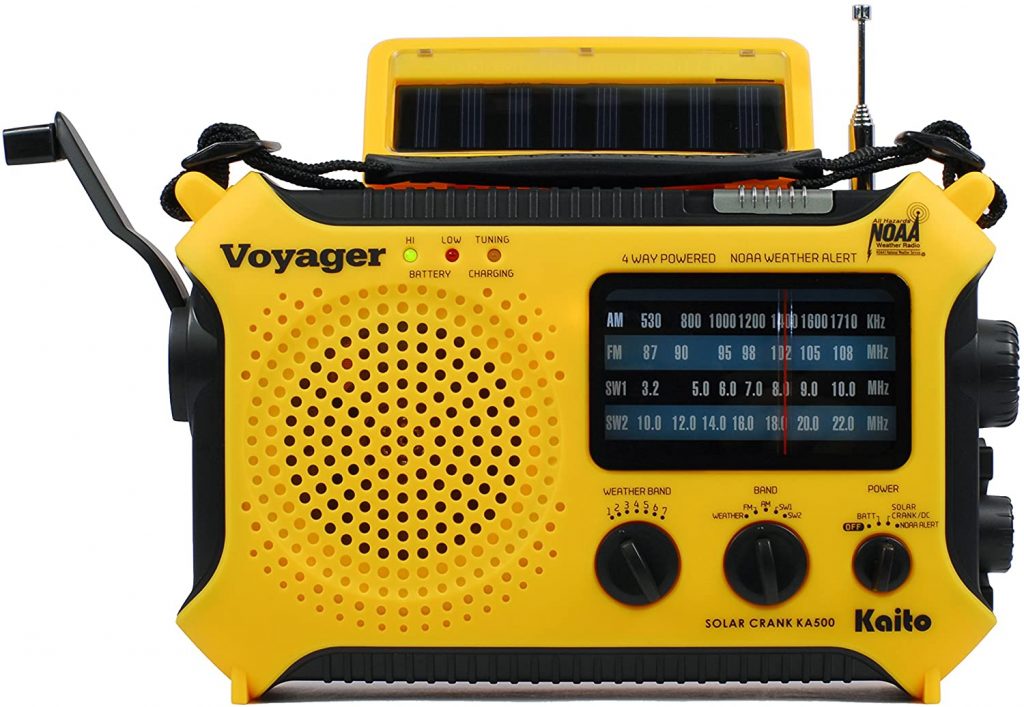
Communication is a very important aspect during a disaster or other critical situations. Good communication can save your life, literally! Because of that, communication gear and signage is a must have for vehicle EDC.
I’m sure all of you already have a smartphone that you carry everyday in your pockets. This is sufficient for almost every condition you can imagine. Modern smartphones have a lot of apps that help you contact authorities and communicate with loved ones.
For most people, having a smartphone is enough to cover their communication needs. For others that are active in remote areas, you might need a satellite telephone that has global coverage. Satellite phones have better signal coverage compared to cellular networks. Because of that, you won’t have to worry about getting lost anywhere.
You should also bring an emergency radio inside your trunk, just in case a disaster hits and you’re still on the road. With an emergency radio, you can listen to disaster alerts and current relief efforts by authorities. You can even tune in to amateur radio channels that might be broadcasted by survivor groups near you.
For signage, having flares and reflective signs from your emergency road kit is already sufficient for most people. You can further supplement this by bringing a high powered flashlight for sending morse code. Some preppers advocate bringing a pair of semaphore flags as an alternative method of communication. However, keep in mind that not everyone understands semaphore.
Vehicle Related Supply
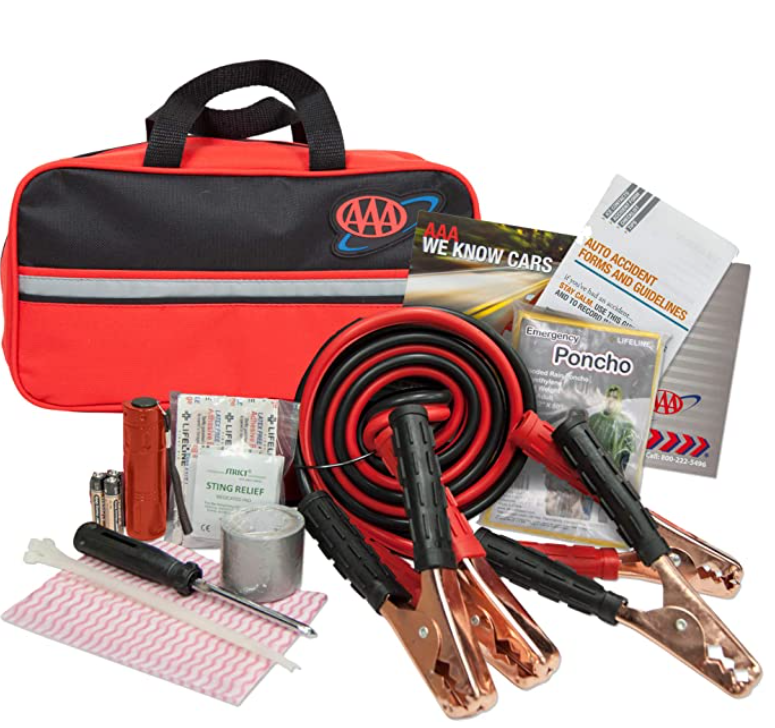
No vehicle EDC list is complete without discussing tools that help your car function at it’s best. These tools are called vehicle related supply, they support your vehicle and provides a way to apply quick fixes when it breaks down.
A great tool kit is a staple utility that you need to have in your car’s EDC gear. Having a good toolkit is important in case you need to repair/replace something on the road quickly. This doesn’t have to be a huge kit but something along the order of a 100 piece tool kit with sockets, wrenches, and screwdrivers are good.
If you currently don’t have a toolkit, you can find one on Amazon for cheap. Before buying, you should consult your local mechanic or handyman on what tools you’d need. You don’t have to buy expensive tools, instead, buy the ones that provide the most function/variety.
However, you need to keep in mind that having the best tools and toolkit is useless if you don’t know how to do the repairs yourself. Because of that, practical knowledge of your vehicle and how stuff around you work (and why they don’t work) is very important.
Emergency road kits are also very important to have in case your vehicle breaks down in the middle of the road. This kit usually includes jumper cables, reflectors, flares, and several tools to do small repairs to your vehicle. Never go out on the road without having one of these emergency kits on your vehicle. It’s just too important to pass up.
If your vehicle is prone to malfunction, don’t neglect to bring spare parts so you can fix your car anywhere you go. This is especially important if your vehicle has rare parts that are hard to find.
A lot of preppers advocate bringing chains or other forms of towing gear. However, be mindful of the vehicle you’re using and what it’s made to do. If you have a small compact city car, bringing a large steel chain will just overburden your suspension. If you’re driving a large truck, then that’s a whole different story.
Conclusion
This article serves as a guideline and as a refresher on what you would probably need to carry and store in your car to be prepared. You need to contextualize what’s recommended in this article with what you need and what’s allowed in your state or country of residence.
You can’t possibly anticipate every scenario and carry everything for all of them. It would be too heavy and your vehicle won’t be moving anywhere carrying that load. However, you can predict and prepare for the most likely possibilities.
Is it likely you will have a flat tire? It can happen, so a jack, a spare tire, and reflectors or flares are something you know you should carry.
It doesn’t have to be a disaster to need some of these supplies. Consider the possibility that you could be stuck for a couple hours on the highway because a truck overturned. Having some water and snacks would come in really handy to make you comfortable during the wait.
Is there likely to be an invasion while you are away from home to necessitate you carrying battle rifle? Well, that depends on where you live I suppose. If you live in areas where there are a lot of wild animals or crime is on the rise, it might be justified to carry a rifle.
There is this saying that it’s better to have it and not need it than to need it and not have it. However, be mindful and try not to pack too much unnecessary items that are just fillers or redundancies. As always, think and plan before you act!


